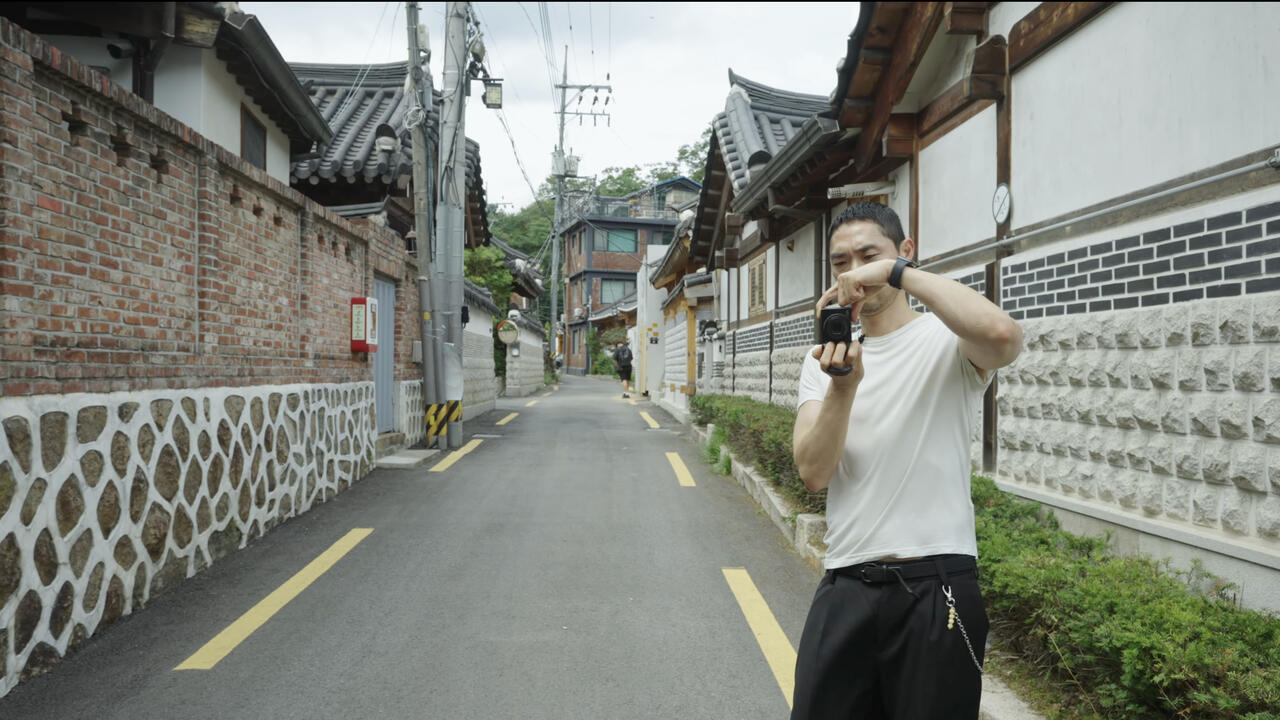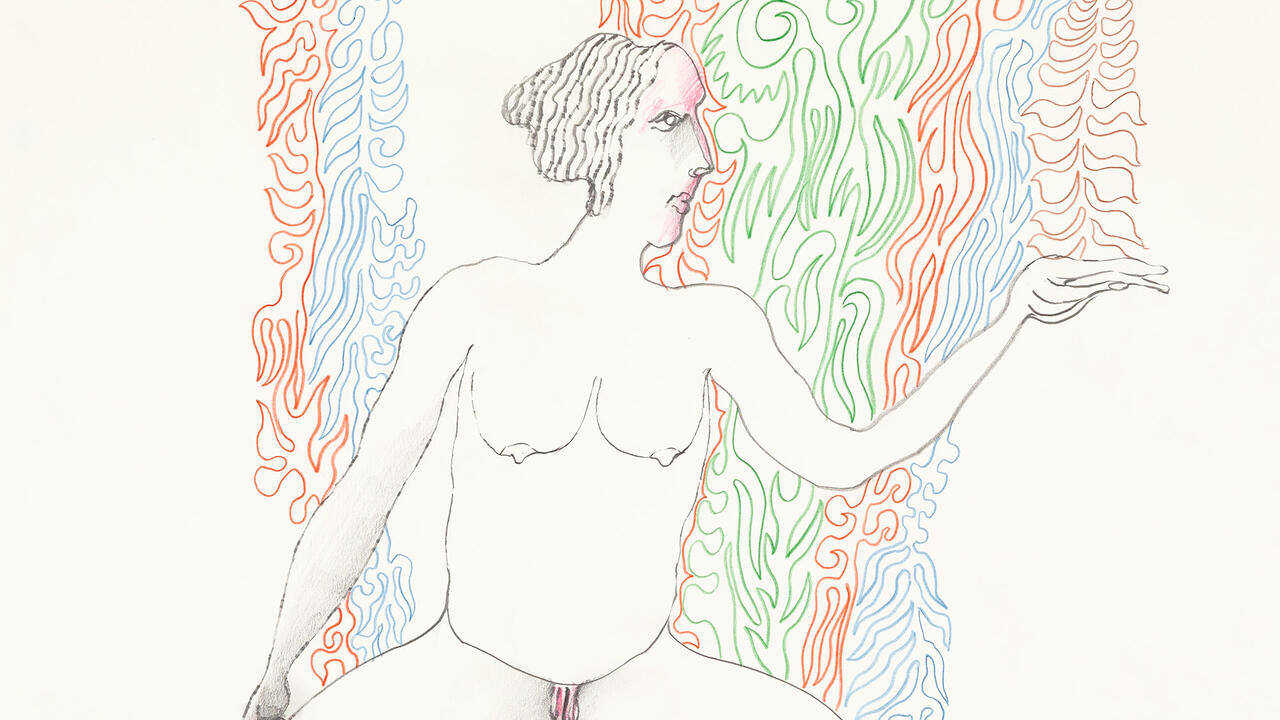Scratch and Sniff
Something fishy
Something fishy
After the impact he has made on the consciousness of ad men, pop stars, newspaper cartoonists, animal rights advocates, not to mention art lovers and haters the length of the land, no one involved in putting together a book about Damien Hirst - least of all the man himself - could have settled for a worthy, critically thorough, nicely laid out but ultimately unmemorable monograph. A Hirst book had to be an event, a media phenomenon, a show-stopping, jaw-dropping, good-taste-trashing roller-coaster ride of a book; and the tumescently titled I Want to Spend the Rest of My Life Everywhere, with Everyone, One to One, Always, Forever, Now (Booth-Clibborn Editions, 1997) is undeniably that. As I write, seven weeks before publication, advance ripples of what will no doubt prove to be a monster wave of publicity are already evident as the book glides into the news pages of the Sunday papers.
Big, brash, riotously colourful and exhaustively designed from first page to last, with gatefold surprises and triple-page throw-outs, the book is a complex feat of paper engineering that has apparently taxed the resources of its Far East printer to the limit. See the butterfly flex its wings and rise from the page! Pull this tab and make the tiger shark disappear! Pull that tab and make the tank fill up with ink! Use the sheet of decals to stick the rude bits blacked out under Chinese law back on to Damien and Maia! Stand well back as a pop-up Judas Iscariot (1994) springs to attention! And when you've done all that, remember the experience with the bonus posters on your bedroom wall!
I Want to Spend's fun-packed visuality flouts the conventions by which the fine art monograph established its seriousness. According to the usual way of doing things, design's self-effacing role in the publishing process is to frame the artist's work for inspection and analysis with all due discretion; it certainly isn't to offer competing attractions. The book retains a documentary purpose by including, alongside the oeuvre, a scrapbook-load of press cuttings and letters to the artist, one which originally enclosed a razor blade - in this sense it isn't a fully autonomous 'artist's book' - while allowing the pre-existing art works to become graphic elements in a new composite 'Hirst', the book itself.
For his design collaborator, Hirst and his publisher turned to Jonathan Barnbrook, a London-based typographer, type designer and commercials director with an international reputation in his own right. It is Hirst's baby (literally, in the case of the infant Connor, given a healthy-looking spread) but it would not have had anything like the same complexion without Barnbrook's input. While their collaboration is unlikely to receive close attention in the pop-up fixated popular coverage to come, this is one of the most notable aspects of the project considered as a contribution to the medium of the book. Graphic designers have long argued for a closer, more fully authorial degree of engagement with their subject matter; in the 90s, design itself has been theorised as a medium of commentary and authorship. Barnbrook is a central figure in this international movement and with I Want to Spend he has created one of the most spectacular, intensive, not to say problematic demonstrations of these possibilities to have come from Britain to date.
The book is revealing, as a result, in ways that neither artist nor designer can have anticipated. In his own projects, Barnbrook's design gestures come perilously close at times to kitsch, but the satirical intention inclines you to give him the benefit of the doubt. Here, by mutual agreement, the designer's triple-coded typefaces and penchant for anti-consumerist imagery have been held in check, but the amphetamine-powered layouts and cod-Pop ambience of the book's candy-coloured palette envelop Hirst's oeuvre in a trivialising clamour that chimes with the spot paintings and wheel jobs, but does the more powerful work no favours. Pretty soon it all begins to look not just knowing but cynical, and the punkish aphorisms from Hirst - 'I'm a hypocrite and a slut and I'll change my mind tomorrow' - treated like slogans in an ad campaign don't help.
As an editorial strategy, these quotations may have seemed like a good way of making Hirst's art more 'accessible' to the reader, as their close juxtaposition with photographs of the work endows them with the determining tone of explanatory captions. 'Death is an unacceptable idea,' the artist announces on a black background. 'So the only way to deal with it is to be detached or amused.' This is accompanied, over a sequence of pages, by the three brutal wound photographs (two of them suicides) used in When Logics Die (1991) and it seems, from its position near the start, to be intended as something like a credo: the book, like the art, will gaze unflinchingly at the raw facts of our mortality. Hirst doesn't seem to allow that other emotions, such as compassion, might be possible reactions to the unacceptable idea of death.
What the book ends up exposing, unwittingly, is the shallowness of his vision. The key to this, it seems to me, is the notorious mortuary shot of the young Damien posing beside a severed head, reprinted here as a two-thirds-life-size, full-bleed, double-page spread treated in silver duotone. It's an important image for Hirst, shown larger than most of the art, presumably because it establishes the credentials and continuity of the artist's concerns; even as a kid he dared to go to the edge. The image exercises a morbid fascination (the grinning Hirst is incidental to this) but does it tell us anything we didn't know, or needed to know, about death? We weren't there in the room with the body and have no idea what we would feel; we have only the image. The dead man - the remains of a real life - becomes a prop in Hirst's visual biography and now in his book. With his bald head, clamped-shut eyes, flabby jowels and triple-chin, he has been reduced to a graphically enhanced after-life in a media-friendly freakshow. Who was this man? There is no sign in anything that Hirst says about this episode in silver words floating across the image that the artist knows or cares. 'I suppose art tries to resurrect the dead', he offers. By reprinting the picture in this way, he endorses his original youthful act and arrogates to himself, in the name of art, special rights over death.

















